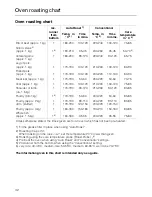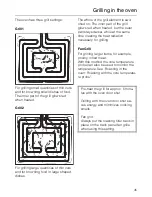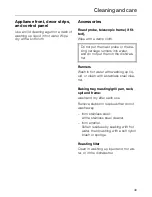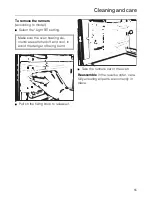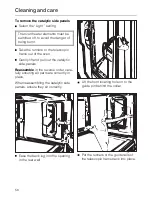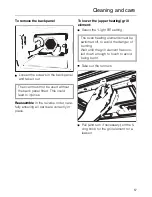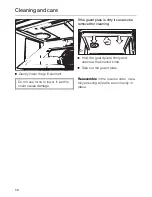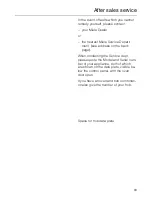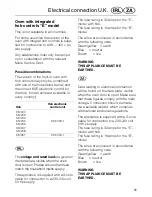
Cleaning and care
c
Catalytic Enamel
Because circulating air in the oven de-
posits oil and fat splashes predominant-
ly on the
rear wall
of the oven, this is
coated in catalytic enamel.
With some models, side panels with ca-
talytic coating are also fitted, and the
removable guard plate above the grill
has a catalytic coating.
When this catalytic enamel is heated to
temperatures above 200°C, oil and
grease deposits are removed, except
for deposits of spices and syrups. The
higher the temperature the more effecti-
ve the process.
To take further advantage of the cataly-
tic properties for cleaning, the “Extra
cleaning process” can be used, (see
that section below). For slight soils the
oven can be cleaned manually.
Do not wait too long between cleaning
sessions as further baking and roasting
will cause oil and grease deposits to
burn on even harder.
Cleaning the catalytic enamel
manually
Where cooking is carried out at lower
temperatures splashes of oil and grea-
se can collect on the catalytic coating.
This slight soiling can be cleaned ma-
nually as follows:
Let the oven cool down and remove the
runners or telescopic frame. Wipe
down the surface(s) using a cloth, soft
sponge or soft nylon brush with warm
water to which a little washing up liquid
has been added.
Do not use oven spray or abrasive
cleaning agents.
Do not wash these panels in the dis-
hwasher. Any mechanical handling
would damage the catalytic enamel.
Clean the oven floor (Clean-Enamel) af-
ter each use.
51






